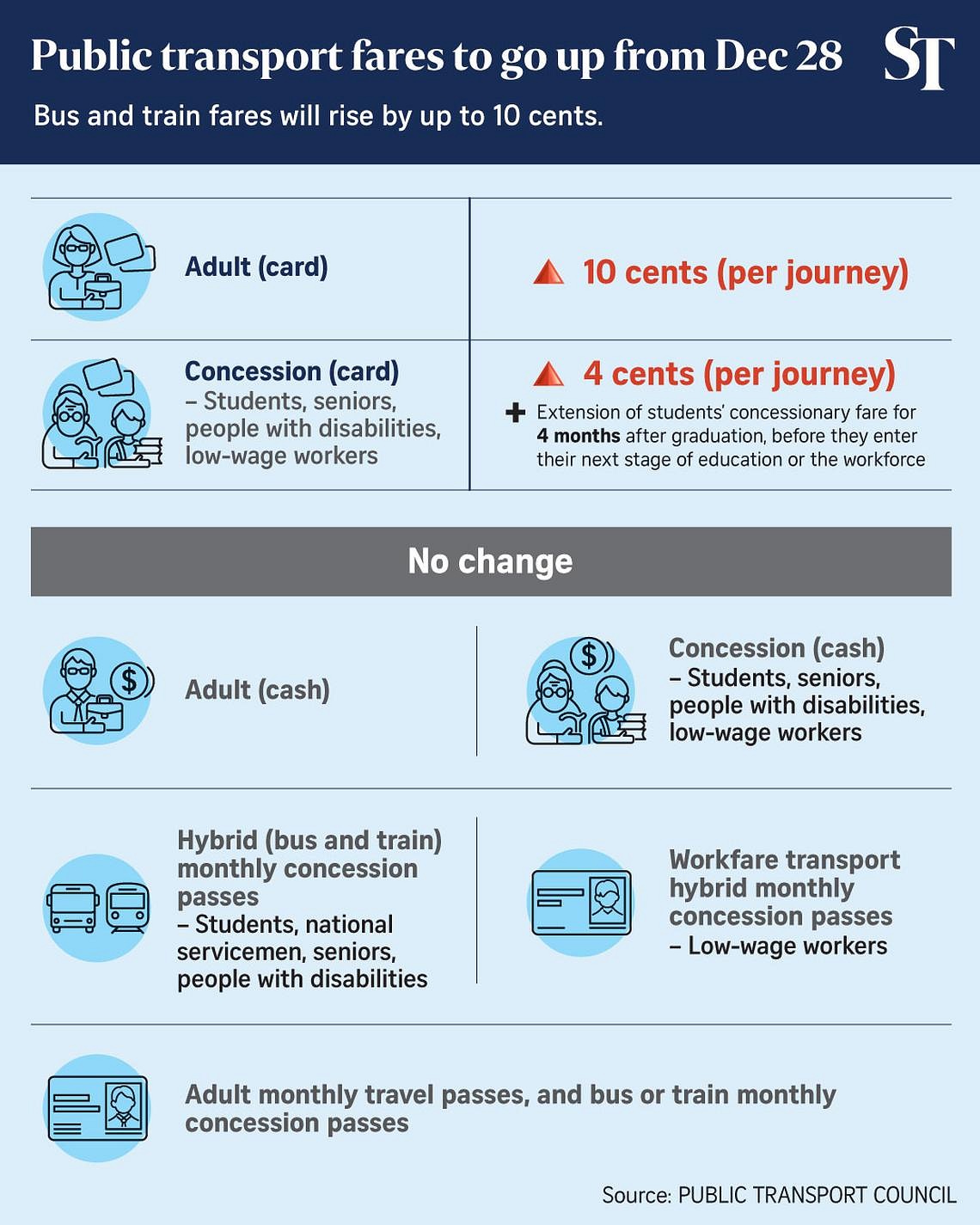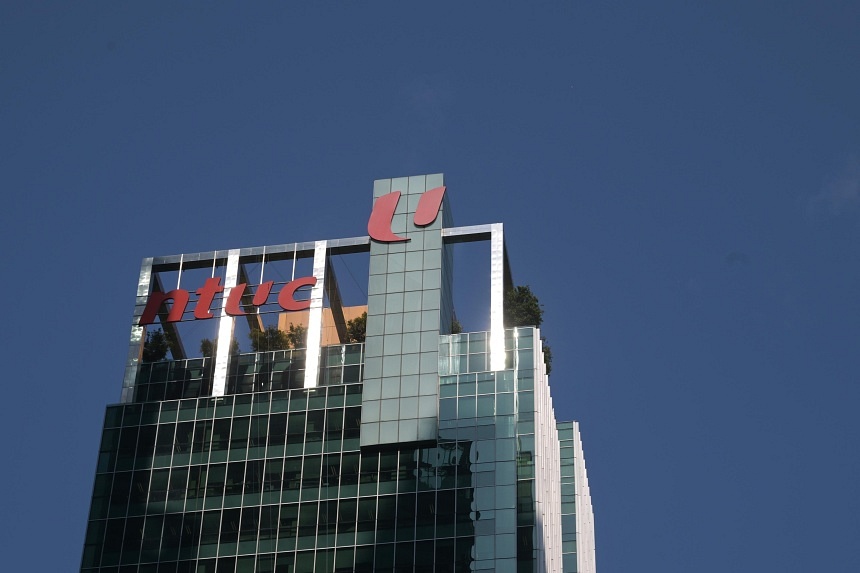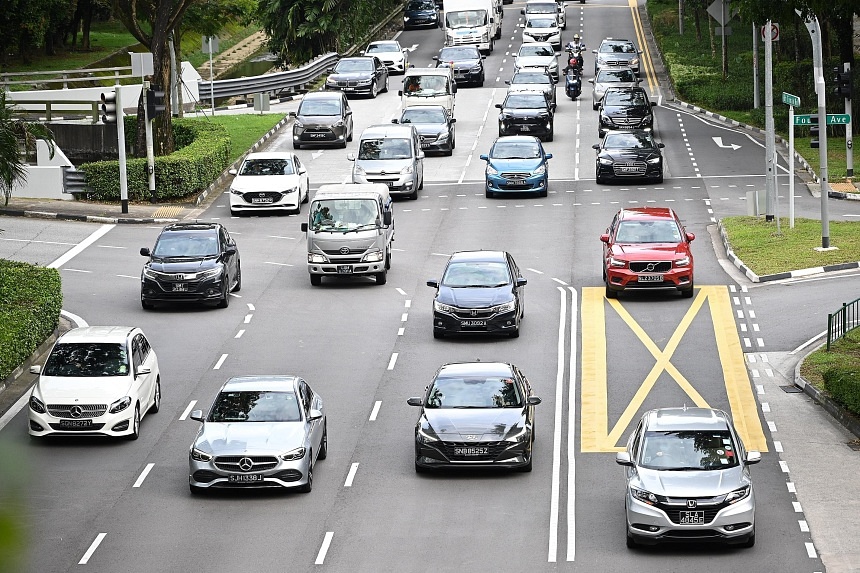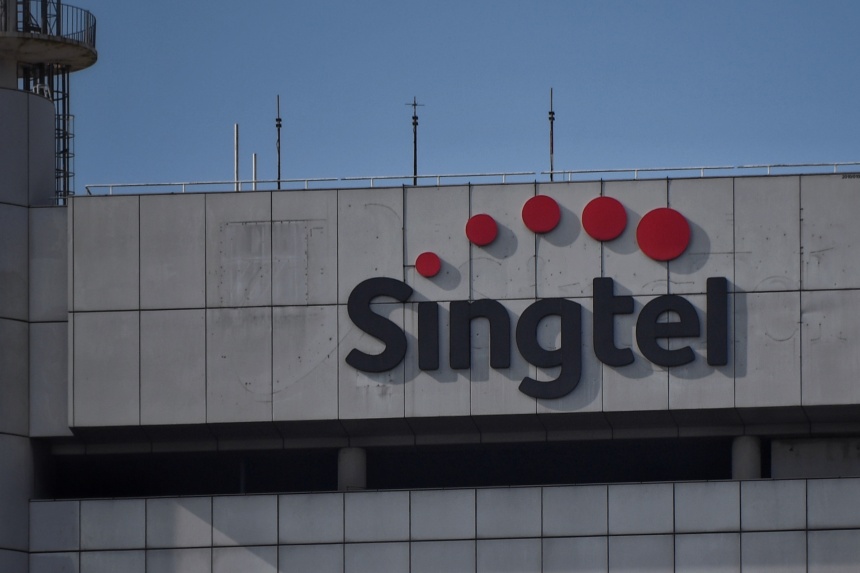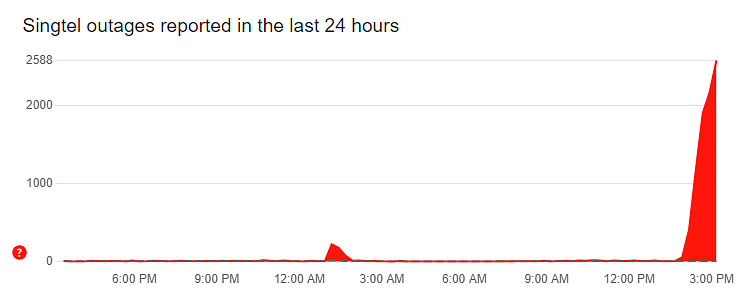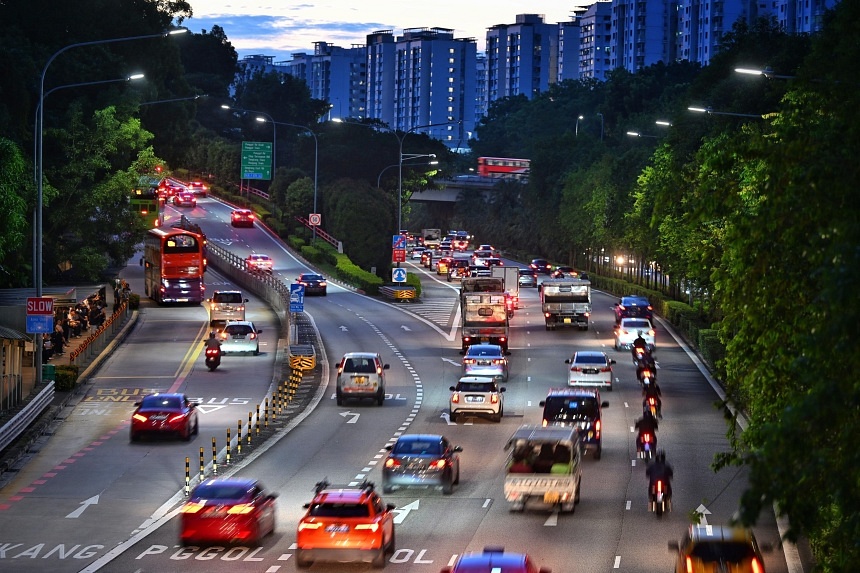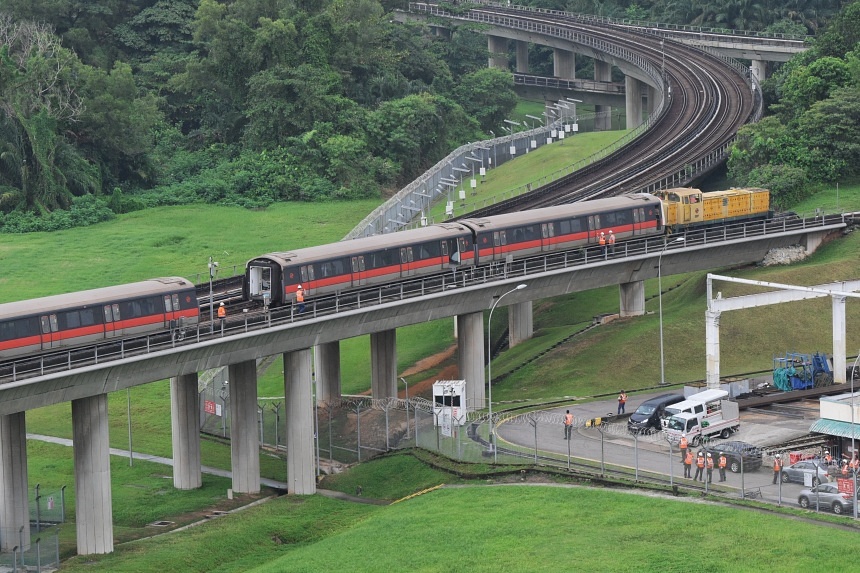500,000 out of 2.8 million MRT journeys affected daily during East-West Line disruption
At 3pm on Sept 25, the second and first carriages of the affected train were towed back to the depot. PHOTO: ST FILE
Kok Yufeng
Transport Correspondent
Oct 15, 2024
SINGAPORE – About 500,000 out of 2.8 million train journeys were affected each day during the severe East-West Line (EWL) disruption that
crippled services between Jurong East and Buona Vista stations from Sept 25 to Sept 30.
This means the disruption – one of the worst to hit Singapore’s MRT system in its 37-year history – affected more than one out of every six MRT trips taken by commuters each day.
Addressing 31 questions filed by 21 MPs on the incident in a ministerial statement on Oct 15, Transport Minister Chee Hong Tat apologised again for the significant inconvenience caused by the disruption.
He told Parliament that the Land Transport Authority (LTA) will mete out penalties should investigations reveal any lapses, and rail operator SMRT will bear the costs of the disruption regardless of the outcome of the probe.
Some details of the incident can be determined only after investigations have been completed, he noted.
“As to the root cause, including why the axle box dropped, as well as learning points to improve our responses and prevent future incidents, these are issues which the investigations will cover,” he added.
Describing
the Sept 25 disruption as “a setback”, Mr Chee said Singaporeans are understandably concerned about what it means for the safety, reliability and resilience of the MRT system.
“These are also our priorities,” he said, adding that the incident will not shake the public transport sector’s determination to do better.
“While we do our best to avoid disruptions, incidents may still happen from time to time,” the minister added. “What is important is how we respond to the incidents, and how we learn from them to strengthen our resilience against future disruptions,” he said.
The disruption on Sept 25 began with a first-generation Kawasaki Heavy Industries train that developed a fault at about 9am while travelling eastward near Clementi station.
There was smoke detected from the train, Mr Chee said, adding that SMRT stopped the faulty train at Clementi station so passengers could alight, before it was withdrawn to Ulu Pandan Depot.
After the train had turned around at Queenstown station and was travelling westward between Dover and Clementi, an axle box came off the bogie of one of the train cars, causing the wheels of the bogie to derail.
However, as the other 11 bogies of the train remained on the rails, the train was able to continue travelling for a few minutes past Clementi, Mr Chee said.
Based on preliminary assessments, this caused damage to 2.55km of track, as well as trackside equipment like power cables and the third rail, which supplies power to trains.
This damage triggered a power trip along parts of the EWL at about 9.25am, causing four other trains that were between Clementi and Buona Vista stations to stall.
Of these four stalled trains, three were at stations where passengers could alight. The fourth train stalled about 40m before the platform at Clementi station, and the 850 passengers on board were guided onto the tracks by SMRT staff to the station platform.
Given the scale of the disruption, Mr Chee said there was some initial confusion on the ground when the incident occurred.
When SMRT staff attempted to restore train service along the affected EWL section, they realised extensive damage had been caused and it would take time to remove the faulty train from the tracks and to carry out repairs, he added.
Mr Chee stressed that commuter and worker safety was the top priority throughout the recovery process.
This was why LTA and SMRT took the necessary time to
complete the repairs and conduct rigorous testing before resuming train service on Oct 1, he said.
Across the MRT system, there are multiple layers of safety controls in place, Mr Chee added.
As the regulator, LTA imposes safety standards that are aligned with international best practices. Operators that do not meet these standards will be subject to penalties, and face additional regulatory conditions and monitoring if necessary.
Mr Chee said LTA also imposes maintenance performance standards as part of its rail licensing conditions, and there are audits by independent external assessors.
Responding to questions by Workers’ Party MP Louis Chua (Sengkang GRC) and Mr Saktiandi Supaat (Bishan-Toa Payoh GRC) about predictive maintenance capabilities, he said the rail operators have installed monitoring systems to detect potential defects where feasible, and use special vehicles to scan the tracks to pick up issues.
However, Mr Chee said he would not comment on whether such systems could have detected risks leading up to the disruption on Sept 25, citing the ongoing investigations.
On reliability, he said LTA and the rail operators take this seriously. While significant progress has been made over the past decade, this continues to be a work in progress, he added.
The minister noted how the MRT network has maintained a mean kilometres between failure (MKBF) – a measure of rail reliability – of at least 1 million train-km since 2019, which he said is comparable with the most reliable overseas metros. In contrast, the MRT network here had an MKBF of 67,000 train-km in 2012.
Estimates show that all MRT lines clocked at least 1 million train-km as at end-September 2024, he said.
Mr Chee said that LTA has been working with the rail operators since 2011 to improve their maintenance regimes. LTA has also upgraded signalling and power systems and invested in infrastructure like signalling simulation centres, to improve the operators’ ability to diagnose and remedy different faults.
LTA’s monitoring of MKBF and rail licensing conditions has ensured that the rail operators here invest sufficiently in maintenance to minimise disruptions too, he added.
In his statement, Mr Chee made the point that Singapore’s public transport network, with six MRT lines and a sizeable fleet of about 5,800 public buses, is more resilient and better able to cope with disruptions than before.
The mitigation measures put in place during the six-day EWL disruption allowed most public transport users to continue with their journeys, albeit with additional travelling time, he said.
Noting that the public transport system was able to cope thanks to the efforts by the respective bus operators and staff on the ground, Mr Chee said planned expansions to the rail network over the next decade will further improve resilience.
He cited the upcoming Stage 6 of the Circle Line, which will close the loop by connecting HarbourFront and Marina Bay stations and provide those living in the west with another route to the downtown area.
The Jurong Region Line, which will open in three stages from 2027 to 2029, will improve connectivity in the west of Singapore and offer more alternative interchanges with the North-South and East-West lines at Choa Chu Kang, Boon Lay, and Jurong East stations.
Similarly, Mr Chee said the Cross Island Line, which will open in stages from 2030, will improve connectivity as almost half of the MRT line’s stations will be interchanges, offering more alternative travel routes.
Responding to questions by MPs about the role that public buses could play to improve public transport resilience, he said buses cannot fully replace rail capacity in the event of an MRT disruption.
He noted how a six-car EWL train can carry more than 1,000 passengers, and run at two to three-minute intervals during peak hours at speeds of up to 80kmh.
In contrast, a double-decker bus can carry only up to 120 passengers and typically runs at much lower speeds depending on traffic conditions.
“Hence, even with up to 80 double-deck bridging buses deployed per day, these were unable to match the full capacity of the East-West Line,” Mr Chee added.
However, he said the public bus network still plays a key role in complementing the rail network here.
“That is why, even when we need to rationalise bus services, we retain at least one trunk route that runs parallel to MRT lines,” he added.
Sixteen MPs rose to seek clarifications from the minister, stretching the discussion to about two hours in total.
Their questions ranged from safety measures put in place for workers to the amount spent by SMRT on maintenance, and whether any further steps like special audits were being taken to bolster rail reliability.
About 850 commuters on board a stalled train near Clementi MRT station safely disembarking on the tracks and being guided back to the station platform. PHOTO: SMRT/FACEBOOK
Progress Singapore Party Non-Constituency MPs Leong Mun Wai and Hazel Poa asked why a Committee of Inquiry (COI) was not convened in this instance.
LTA has
started its own probe into the EWL disruption, with an advisory panel of local and international experts appointed to review the findings.
Singapore’s Transport Safety Investigation Bureau (TSIB), a department of the Ministry of Transport, will also carry out an independent safety investigation.
Mr Leong asked Mr Chee how the recent disruption was different from the severe North-South Line breakdowns in 2011, which prompted then Prime Minister Lee Hsien Loong to order a COI.
Ms Poa said a COI would allow the public to hear testimony from experts, and she asked Mr Chee if he would consider public hearings for LTA’s probe.
In response, Mr Chee said the context in 2011 was different from today, as the MRT system was less reliable. He also noted that COIs were not convened for other serious rail incidents in the past, like the flooding of MRT tunnels near Bishan station in 2017.
Mr Chee said the investigations by LTA and TSIB into the EWL disruption will be done thoroughly, and the findings will be made public. “That is the commitment that we have made,” he added.
A Ministry of Transport spokesman previously said that LTA, as the rail regulator, has the necessary regulatory powers and technical knowledge to conduct a thorough investigation.




